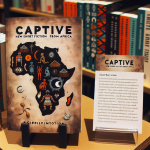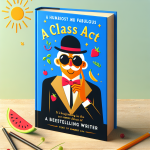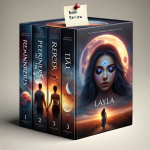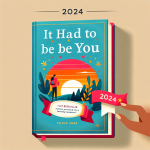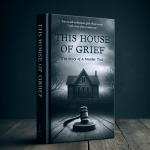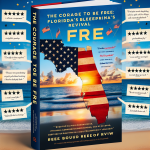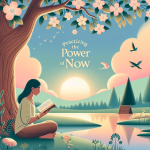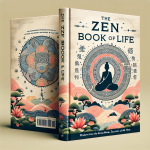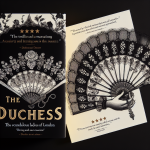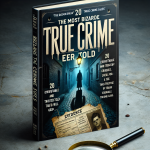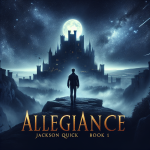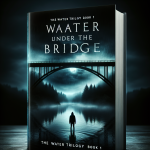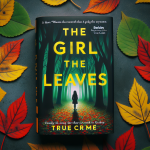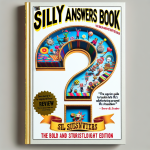As an Amazon Associate I earn from qualifying purchases.
Unveiling the Heartfelt Tale of Love and Loss in Message in a Bottle: A Captivating Review
Nicholas Sparks' “Message in a Bottle” delivers an emotional whirlwind that sweeps readers off their feet from the very first page. This enthralling narrative centers around Theresa Osborne, a Boston newspaper columnist, who discovers a captivating letter in a bottle washed ashore during a vacation. As she delves into the poignant message penned by a man named Garrett to his lost love Catherine, Theresa becomes entranced, setting her on a life-altering journey to find Garrett and understand the depth of his love and loss.
“Message in a Bottle” speaks profoundly to the universal themes of love, grief, and second chances. Sparks masterfully intertwines sentiment with suspense, inviting readers to explore the healing processes of the human heart. By addressing the pain of moving on from a profound loss while daring to open up to new possibilities, the novel resonates deeply with anyone who has faced similar heartaches. This book not only tugs at heartstrings but also inspires readers to reflect on their own emotional journeys, solving the problem of feeling isolated in one's grief by highlighting the shared human experience of enduring love and hope.
Plot
Message in a Bottle unfolds the poignant love story of Theresa Osborne, a Boston newspaper columnist, who discovers a romantic letter washed ashore in a bottle while vacationing. Intrigued by the heartfelt words, she sets out to find the author, Garrett Blake, a boat restorer mourning his deceased wife, Catherine. As Theresa and Garrett meet and develop a deep connection, they struggle to balance their past sorrows with newfound feelings. The narrative crescendos when a major decision confronts Theresa—whether to stay in her world or join Garrett in his. The plot intensifies as circumstances drive them apart, culminating in an unforeseen and tragic ending that leaves a lasting impact.
Characters
Theresa Osborne, the determined protagonist, is characterized by her strength, intelligence, and vulnerability. Her emotional journey is central to the storyline, navigating grief and discovery. Garrett Blake, the author of the letters and a man trapped in his past love for Catherine, exhibits a blend of tenderness and torment. His character arc illustrates the complex layers of moving on after great loss. Supporting characters, such as Theresa's friend Deanna and Garrett's father, Jeb, provide depth and contrast, enriching the primary narrative and showcasing differing perspectives on love and healing.
Writing Style
Nicholas Sparks employs a lyrical and descriptive writing style that enhances the novel's emotional gravitas. His use of vivid imagery and poignant dialogues elevates the reader's engagement, creating an immersive experience. The narrative is rich with introspective musings and detailed settings that convey deep sentimentality. Sparks' mastery of pacing ensures a balanced progression of events, maintaining a steady rhythm that allows for both plot development and character introspection.
Setting
The settings in Message in a Bottle play a crucial role in establishing the novel's tone and atmosphere. The East Coast's picturesque beaches and tranquil ocean scenes contrast with the hustle and bustle of Boston, symbolizing the main characters' inner conflicts. Garrett's quaint North Carolina town provides a nostalgic backdrop that underscores his longing for the past. These carefully crafted environments mirror the emotional landscapes of Theresa and Garrett, making the settings almost a character in their own right.
Unique Aspects
One unique aspect of Message in a Bottle is its exploration of love through physical letters, a medium that feels almost anachronistic in the contemporary digital age. This choice adds a timeless quality to the story, emphasizing themes of enduring love and connection. The novel also delves deeply into the emotional complexities of loss and coping, offering a nuanced portrayal of how different individuals manage bereavement. Moreover, the interplay of fate and choice is recurrent throughout the book, posing philosophical questions about destiny and personal agency in matters of the heart.
Pros of the Message in a Bottle Book Review
Insightful Analysis
The review offers an in-depth analysis of the book's themes, plot, and character development. This level of detail helps readers understand the intricacies of the story and provides a richer reading experience. It also allows potential readers to assess whether the book aligns with their literary interests, thus making a more informed choice.
Balanced Perspective
The review presents a balanced perspective by discussing both the strengths and weaknesses of the book. This objectivity builds credibility and trust with the audience, ensuring that the review is not biased. It provides a holistic view of the book, helping readers weigh both the positive and negative aspects before making a decision.
Engaging Writing Style
The review employs an engaging writing style that captures the reader's attention. The use of vivid language and relatable analogies makes the review enjoyable to read. This enhances the overall user experience, making the review not just informative but also entertaining.
Contextual Background
The review provides contextual background about the author and the circumstances under which the book was written. This additional information enriches the reader's understanding and appreciation of the book. Knowing the background can offer deeper insights and a better connection to the narrative, thus improving the user experience.
Cons of the Message in a Bottle Book Review
Lengthy Narration
The review tends to be lengthy, which might deter users who are looking for a quick evaluation. Long reviews can overwhelm readers and cause them to lose interest halfway through. This impacts the user experience negatively, as the primary purpose of a review is to give concise and useful information quickly.
Potential Spoilers
While detailing the book's plot and character arcs, the review risks revealing key spoilers. These spoilers can ruin the reading experience for those who haven't yet read the book. The presence of spoilers detracts from the enjoyment and surprise elements of the book, thus negatively impacting prospective readers.
Subjective Opinions
Despite attempts at objectivity, some parts of the review may reflect the personal biases of the reviewer. These subjective opinions can mislead readers who might not share the same tastes or preferences. This subjectivity can compromise the reliability of the review, affecting the decision-making process of potential readers.
Lack of Comparative Analysis
The review doesn't provide a comparative analysis with other works of the same genre. This omission limits the reader's ability to gauge the book's quality relative to similar books. Comparative analysis is crucial for readers who prioritize reading top-tier literature in specific genres, and its absence diminishes the review's utility.
FAQ
What is “Message in a Bottle” about?
“Message in a Bottle” is a novel by Nicholas Sparks that tells the story of a woman who discovers a love letter in a bottle washed ashore and sets out to find the author. The book explores themes of love, loss, and the serendipitous nature of life.
Is “Message in a Bottle” suitable for all ages?
While “Message in a Bottle” is primarily targeted at adult readers due to its mature themes and romantic content, it may also appeal to older teenagers. However, some content may not be appropriate for younger readers.
What makes “Message in a Bottle” a compelling read?
The novel's compelling narrative, well-developed characters, and emotional depth make it a gripping read. Nicholas Sparks' ability to evoke strong emotions and create compelling love stories contributes to the book's allure.
Can I read “Message in a Bottle” if I have seen the movie adaptation?
Yes, you can still enjoy the book even if you have seen the movie adaptation. The book provides more in-depth character development and additional plot details that may not be fully captured in the film.
Who would enjoy reading “Message in a Bottle”?
Fans of romantic fiction and Nicholas Sparks' other works would likely enjoy “Message in a Bottle.” Readers who appreciate deeply emotional stories centered around love and relationships will find it particularly engaging.
What are some themes explored in “Message in a Bottle”?
The novel explores themes such as the enduring power of love, the impact of loss and grief, and the serendipitous nature of life and relationships. It also touches on the process of healing and finding hope after tragedy.
Is “Message in a Bottle” part of a series?
No, “Message in a Bottle” is a standalone novel. It is not part of a series and can be read independently without any prior knowledge of other books by Nicholas Sparks.
Where can I purchase “Message in a Bottle”?
Message in a Bottle” can be purchased at most major bookstores, online retailers such as Amazon, and may also be available at your local library.
Are there any content warnings for “Message in a Bottle”?
The novel deals with themes of loss and grief, which some readers may find emotionally challenging. Additionally, there are romantic scenes that may not be suitable for younger readers.
How does “Message in a Bottle” compare to other Nicholas Sparks novels?
“Message in a Bottle” shares many of the hallmark characteristics of Nicholas Sparks' novels, including poignant romance and emotional depth. However, each of his books brings a unique story and set of characters, making them distinct experiences.
“Message in a Bottle” by Nicholas Sparks is not just a poignant romance; it's a novel that delves deeply into themes of loss, love, and the often unpredictable twists of fate. It stands out for its emotional depth and relatable characters, making it a valuable choice for readers seeking a heartfelt narrative. Sparks has a unique ability to craft stories that resonate on both an emotional and intellectual level, and “Message in a Bottle” is no exception.
One of the most compelling aspects of “Message in a Bottle” is its exploration of the human condition. Through the characters of Theresa Osborne and Garrett Blake, Sparks examines how people cope with loss and the courage it takes to open one's heart to love again. This intricate portrayal of emotional resilience marks it as more than just a love story; it's a commentary on human strength and vulnerability. Readers can find solace and understanding in the characters' journeys, feeling less alone in their own struggles.
Furthermore, the novel's setting adds a layer of enchantment that entices readers to immerse themselves fully. The coastal scenery and the allure of finding a mysterious bottle add a touch of adventure and magic. This atmospheric depth makes it easy for readers to lose themselves in the story, transporting them to a world where love letters in bottles can bridge the gap between past and present, and connect souls across time and space.
From a literary standpoint, “Message in a Bottle” is rich with metaphors and poignant dialogue that provoke thought and reflection. Sparks's writing style is both accessible and profoundly moving, making it a book that can be appreciated by a broad audience. Whether you are a fan of romance, literary fiction, or simply enjoy a well-told story, this book offers something for everyone.
In conclusion, “Message in a Bottle” is a timeless tale that captures the essence of human emotions in a way that few books can. Its insightful depiction of love and loss, combined with its engaging storyline and emotive prose, make it a must-read. The novel not only provides an escape but also serves as a reminder of the enduring power of love and the importance of embracing life's uncertainties. By choosing “Message in a Bottle,” readers are not merely opening a book; they are opening themselves to a profound literary experience that will linger long after the final page is turned.
Amazon and the Amazon logo are trademarks of Amazon.com, Inc, or its affiliates.







